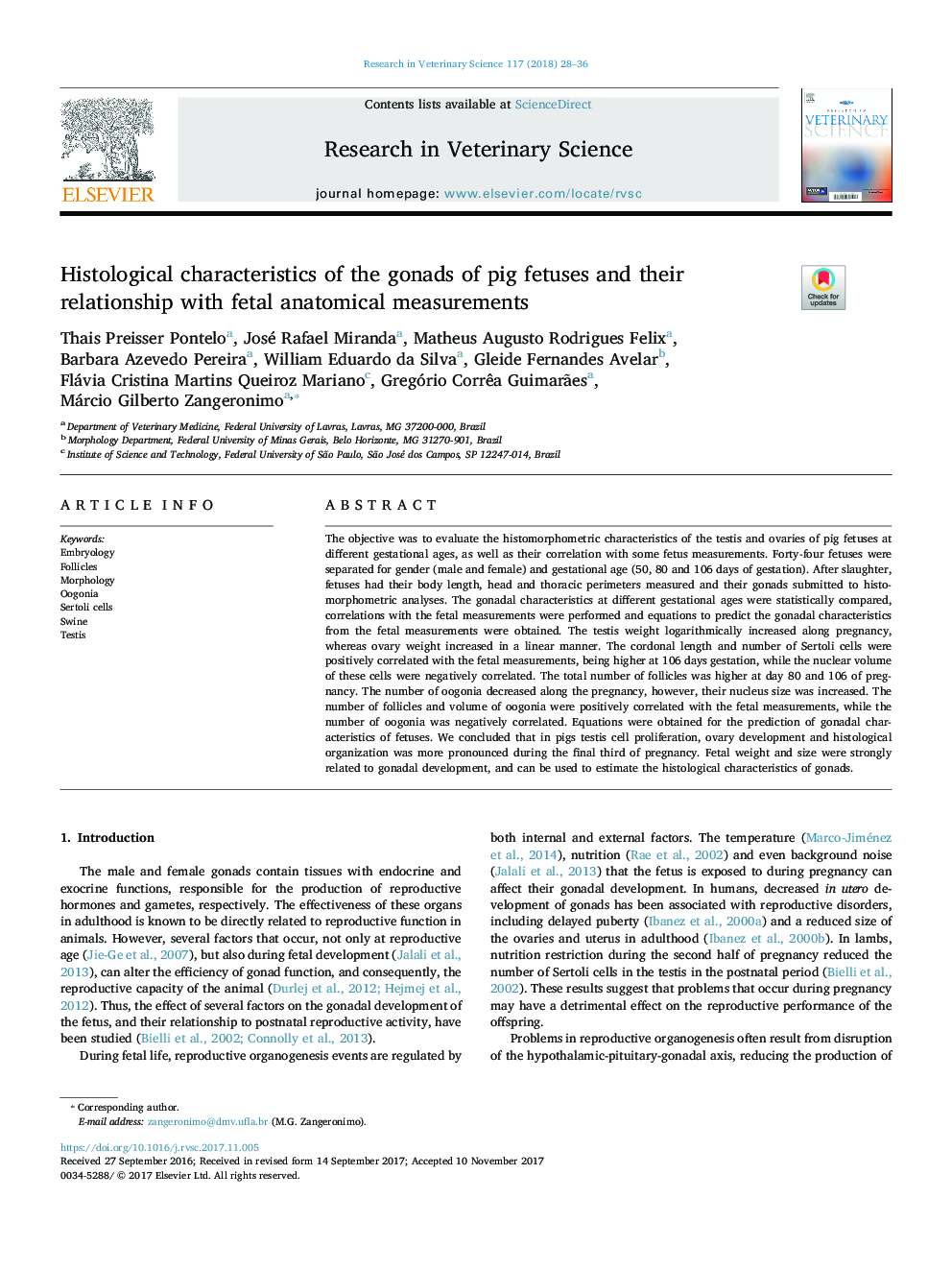| Article ID | Journal | Published Year | Pages | File Type |
|---|---|---|---|---|
| 8504007 | Research in Veterinary Science | 2018 | 9 Pages |
Abstract
The objective was to evaluate the histomorphometric characteristics of the testis and ovaries of pig fetuses at different gestational ages, as well as their correlation with some fetus measurements. Forty-four fetuses were separated for gender (male and female) and gestational age (50, 80 and 106Â days of gestation). After slaughter, fetuses had their body length, head and thoracic perimeters measured and their gonads submitted to histomorphometric analyses. The gonadal characteristics at different gestational ages were statistically compared, correlations with the fetal measurements were performed and equations to predict the gonadal characteristics from the fetal measurements were obtained. The testis weight logarithmically increased along pregnancy, whereas ovary weight increased in a linear manner. The cordonal length and number of Sertoli cells were positively correlated with the fetal measurements, being higher at 106Â days gestation, while the nuclear volume of these cells were negatively correlated. The total number of follicles was higher at day 80 and 106 of pregnancy. The number of oogonia decreased along the pregnancy, however, their nucleus size was increased. The number of follicles and volume of oogonia were positively correlated with the fetal measurements, while the number of oogonia was negatively correlated. Equations were obtained for the prediction of gonadal characteristics of fetuses. We concluded that in pigs testis cell proliferation, ovary development and histological organization was more pronounced during the final third of pregnancy. Fetal weight and size were strongly related to gonadal development, and can be used to estimate the histological characteristics of gonads.
Related Topics
Life Sciences
Agricultural and Biological Sciences
Animal Science and Zoology
Authors
Thais Preisser Pontelo, José Rafael Miranda, Matheus Augusto Rodrigues Felix, Barbara Azevedo Pereira, William Eduardo da Silva, Gleide Fernandes Avelar, Flávia Cristina Martins Queiroz Mariano, Gregório Corrêa Guimarães,
